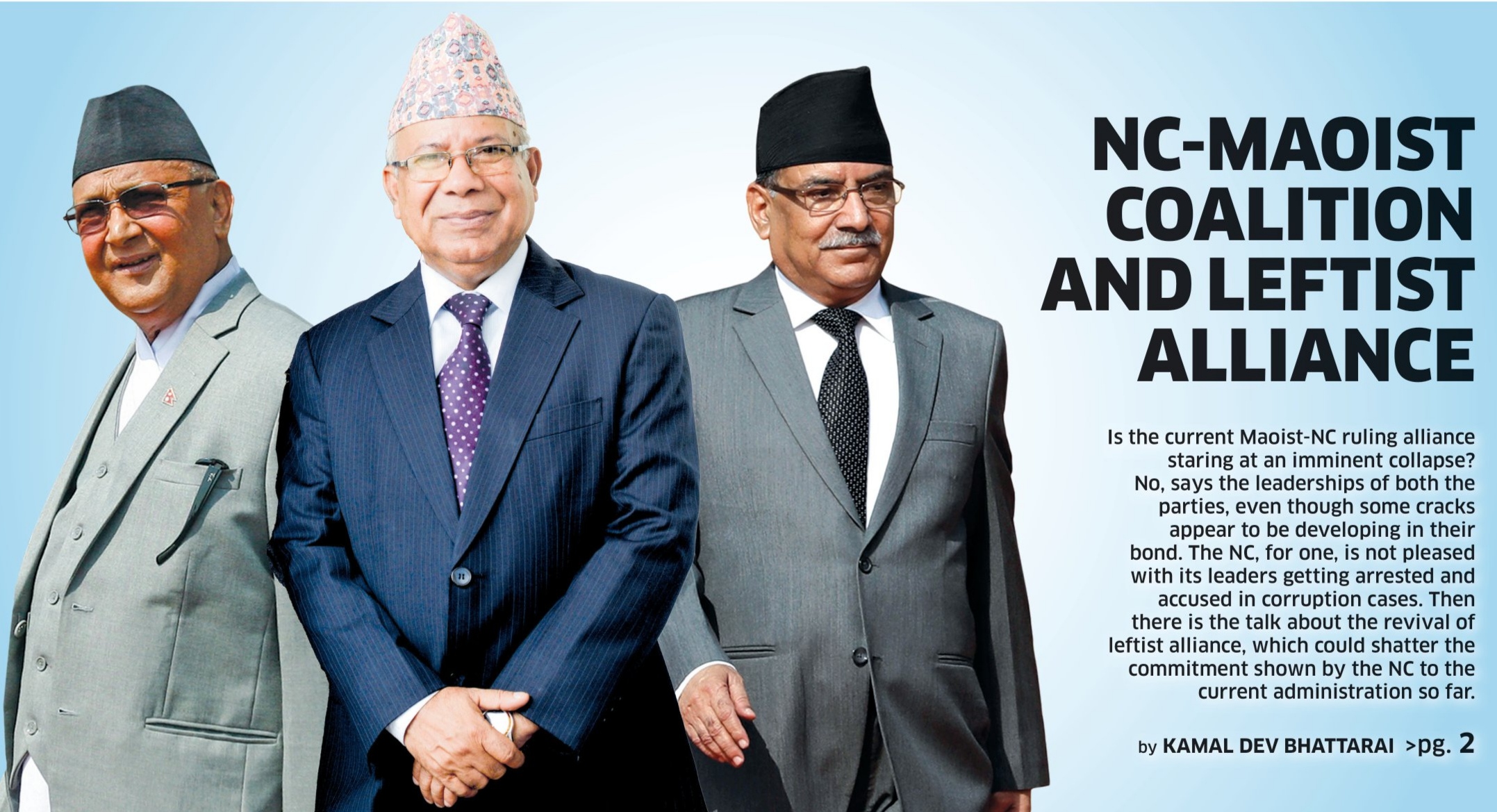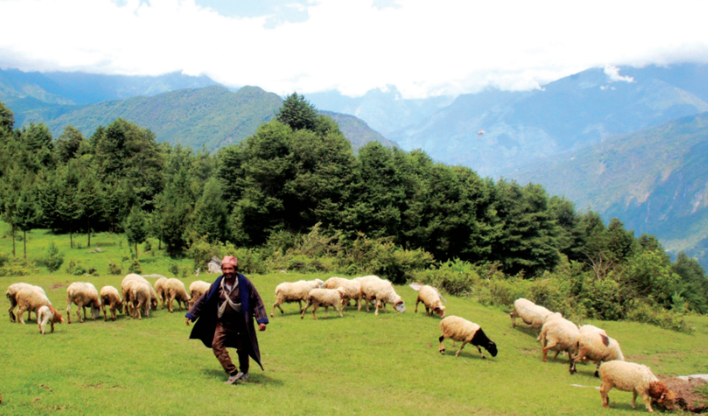Civil engineering: Role of students
The ancient civilizations of Egypt, Mesopotamia, and the Indus Valley each made significant contributions to civil engineering, with the construction of pyramids, ziggurats, and irrigation systems respectively. In fact, even the Ramayana, a Hindu epic, describes an incident where Lord Ram and his team constructed a bridge of stones over a sea. As human beings have evolved, so has civil engineering, with the field experiencing every transition phase of homo sapiens. Today, we rely on civil engineering structures 24/7, whether directly or indirectly. Every civil engineering project has a story that involves the application of mathematics and physics. Because of this, civil engineering is always a topic of discussion among society members, making it a common belief. Civil engineers have accomplished incredible feats of construction that were once considered unimaginable. However, the current state of civil engineering in Nepal presents a surreal situation. The construction projects in Nepal have yet to leave a significant impact on the world stage. Challenges to proper urbanization such as poorly constructed roads, inadequate drainage systems, congested traffic, polluted air, uneven population distribution, and lack of access to clean drinking water are some of the major civil engineering issues currently facing Nepal. Are there any concrete plans for the future of civil engineering in Nepal, particularly with regards to addressing global warming? Furthermore, how is Nepal progressing towards achieving the Sustainable Development Goals (SDGs)? Currently ranked 91 with a score of 66.18 out of 100, there is still work to be done. It is troubling that Kathmandu consistently ranks among the top three most polluted cities in the world, with many visitors experiencing nasal and vision problems upon arrival. What are the areas in which we need to improve to address the issue of air pollution in Kathmandu? One of the objectives of the Sagarmatha Civil Engineering Student's Society (SCEnSS) at Sagarmatha Engineering College is to address civil engineering problems at a student level and bring attention to potential solutions. Collaborating with similar societies from other institutions can contribute to producing valuable insights. Students have the opportunity to concentrate on various areas, including:
- Organizing awareness programs
- Participating in research-oriented projects
- Developing projects related to diverse civil engineering concepts and challenges
- Co-Hosting events in partnership with national and international organizations
East-West Highway expansion gains momentum with ADB’s $300m loan
The government’s effort to expand the East-West Highway to four lanes has received a major boost with the Asian Development Bank (ADB) approving $300m in loan assistance. For the last few years, the government has been working on expanding the different sections of the highway with loans, particularly from the World Bank (WB) and Asian Development Bank (ADB). It’s been five years since the government started the expansion of the highway to a four-lane, there is still a long way to go before the entire highway is expanded. The East-West Highway is the only highway that currently connects Nepal's eastern border to the western border through the southern plains, thus is economically vital for the country. Though the Mid-Hill Highway aims to connect the eastern to western borders of the country through the hill regions, it is still a work in progress. On Wednesday, ADB confirmed that it approved a $300m loan to expand the road from Kakarbhitta (Jhapa) to Laukahi (Sunsari) to a four-lane dual carriageway from the current two lanes. Issuing a press statement, ADB has said the 95-km road section of the highway is a vital component of transport connectivity with India and Bangladesh. The Manila-based lender is supporting the expansion of the highway as part of its South Asia Sub-Regional Cooperation Highway Improvement Project. According to ADB, the existing road section will be upgraded to an Asian Standard Class I and Nepal Road Standard Class II. The Department of Roads (DoR), the government agency under the Ministry of Physical Infrastructure and Transport responsible for the expansion of the highway, has been working on the contractor selection process for the last several months. “We have sent the names of selected bidders to the ADB for approval,” said an official of the project directorate (Asian Development Bank) of DoR. “Once we get the approval, we plan to award the project to the contractor before the end of the current fiscal year in mid-July.” ADB has also financed the expansion of the Butwal-Narayanghat section of the East-West Highway. In Nov 2019, China State Construction Engineering Corporation Limited, the contractor for this section of the road, formally started the work in the field. Though the original deadline for widening the road from the current two lanes to six was on 7 Aug 2022, physical progress of the work has remained less than 20 percent till the deadline, according to DoR. Then, the department extended the deadline by another 386 days. After DoR warned the Chinese contractor to terminate the contract, officials said that the contractor has now accelerated the work. "If the contractor continues at this pace, we should no longer terminate the contract,” a DoR official working at the Narayanghat-Butwal Road section said. According to the official, the contractor has also started blacktopping the road in certain sections. In October 2018, ADB approved loans amounting to $180m to expand the road from Kanchanpur in Saptari to Kamala in Siraha on the East-West Highway. “Construction work is currently underway in this 87km section of road,” said the official of the project directorate (ADB). However, DoR failed to call the tender for Kanchanpur to Laukahi section of the East-West Highway because of a delay in forest clearance. “As Koshi Tappu Wildlife Reserves falls under the section of the road, we have not yet got forest clearance,” the official said, adding that a detailed project report of the section has already been prepared. Besides ADB, the World Bank has also been supporting the expansion of a number of sections of the East-West Highway. An official at the Foreign Aid Implementation Section of DoR said that a detailed design is being prepared with the assistance of the World Bank to expand the Kamala-Dhalkebar-Pathalaiya section of the highway stretching 130 kilometers. Likewise, DoR is also preparing a detailed design for the expansion of the 59 km Butwal-Gurusinghe-Chanauta section of the East-West Highway. “Detailed designs of both sections will be finalized in the next 3-4 months,” said the department official. “Our plan is to invite biddings and award contracts in the next fiscal year 2023/24.” In June 2020, the World Bank approved a loan package of $450 to improve the Kamala-Dhalkebar-Pathlaiya road section of the East-West Highway along with the Nagdhunga-Naubise-Mugling road section of the Prithvi Highway. The World Bank is supporting for improvement of these road sections as a part of its Nepal Strategic Road Connectivity and Trade Improvement Project. According to the World Bank, both road sections are crucial to Nepal’s connectivity and trade with India and other countries.
Profit of life insurance companies surges by 78 percent
Life insurance companies have posted significant growth in their profits in the current fiscal year. According to the unaudited financial reports for the third quarter of the current fiscal year, the profits of the insurers increased by 78.12 percent in the nine months of FY 2022/23. The 17 life insurance companies that are currently in operation, have posted net profits amounting to Rs 3.73 billion, an increment of Rs 1.64bn from Rs 2.09bn in the same period of the last fiscal year. However, the overall business of life insurance companies grew marginally in this fiscal year. According to Nepal Insurance Authority (NIA), the life insurance business grew by a meager 2.19 percent in the nine months of FY 2022/23. The statistics of NIA show life insurance companies collected premiums amounting to Rs 104.73bn in the review period compared to Rs 102.54bn during the same period of the last fiscal year. Insurers say their profits improved mainly due to the high-interest rates on deposits of banks and financial institutions. Insurance companies keep most of their investable capital in fixed deposits of commercial banks. Over the past year, banks increased the interest rates of deposits in response to a prolonged liquidity crunch benefitting institutional depositors such as insurance companies. According to insurers, their profits may increase further after the actuarial valuation. However, such an assessment will be done after the completion of the fiscal year, during which up to 10 percent of the insurance fund can be transferred to the profit and loss account. Suryajyoti Life Insurance has topped the chart in terms of net profit earnings. The company posted a net profit of Rs 537.683m in the nine months of the current fiscal year. Nepal Life Insurance Company came second with a net profit of Rs 446.549m followed by Sun Nepal Life Insurance with Rs 444.519m.
| Company | Mid-April 2023 (in Rs, in m) | Mid-April 2022 (in Rs, in m) |
| Suryajyoti Life Insurance | 537.683 | 357.204 |
| Nepal Life Insurance | 446.549 | -194.561 |
| Sun Nepal Life Insurance | 444.519 | 143.632 |
| National Life insurance | 296.925 | 255.609 |
| Reliable Nepal Life Insurance | 285.736 | 210.656 |
| Met Life Insurance | 223.36 | 181.003 |
| Prime Life Insurance | 210.02 | 189.543 |
| Asian Life Insurance | 194.722 | 184.054 |
| IME Life Insurance | 182.450 | 101.997 |
| Gurans Life Insurance | 161.227 | 131.604 |
| Sanima Reliance Life Insurance | 161.043 | 133.815 |
| Citizen Life Insurance | 150.148 | 146.337 |
| Prabhu Life Insurance | 132.391 | 101.334 |
| Union Life Insurance | 129.590 | 27.274 |
| LIC Nepal Insurance | 83.709 | 6.001 |
| Mahalaxmi Life Insurance | 83.239 | 72.42 |
| Rastriya Beema Sansthan | 13.038 | 49.677 |
NRB’s unified directive for BFIs: Stringent conditions dampen hopes of borrowers and bankers
The third quarterly review of the monetary policy for the current fiscal year brought hope to the struggling business community members who thought they were given breathing space by the Nepal Rastra Bank (NRB). However, their hopes have been dashed with NRB putting stringent conditions for loan restructuring and rescheduling in the unified directive for banks and financial institutions (BFIs). Issuing a circular on Wednesday, the central bank said that rescheduling and restructuring of loans can be done after the payment of at least 10 percent of the outstanding interest amount by analyzing the cash flow and income of the industry and business at the request of debtors. Bankers say the conditions set by NRB will benefit only a limited number of people while the larger number affected by the economic slowdown will not be able to get the relief. Bankers have also expressed their displeasure over the five percent provisioning condition that they say will affect the profit of BFIs. In the third quarter review of the monetary policy, NRB set the mid-July, 2023 deadline for the restructuring and rescheduling of loans. The central bank allowed restructuring and rescheduling of loans up to Rs 50m to businesses such as hotels and restaurants, animal husbandry and construction firms, and other sectors by the time frame. However, in the circular NRB has stated that the loan classified as an active loan up to Chaitra (mid-April) can only be restructured and rescheduled and the provisioning of a five percent on the restructured and rescheduled loan has to be made. According to the bankers, businesspersons will not get relief as mentioned in the monetary policy review after NRB’s directive. “Such facilities should have been given to those who paid loans regularly till Poush (mid-January),” said Bhuvan Dahal, former CEO of Sanima Bank. While the NRB has said that the construction sector is eligible for the loan rescheduling and restructuring facility, the central bank's guideline has defined only limited types of businesses under the construction sector. Based on the NRB definition, companies that own residential and non-residential apartments, housing, malls and large-scale construction projects such as highways, bridges, etc. will get the facility of loan restructuring leaving the companies producing steel, cement, paint, and bricks that have been affected the most by the current economic slowdown empty handed. Earlier, banks were required to have provisioning of 1.3 percent of all loans. In the latest directive, NRB has asked them to add 3.7 percent to the rescheduled and restructured loans. Bankers say that this will further affect their profits. Everest Bank CEO Sudesh Khaling said that the profits of banks will take a further beating due to the new provisions. “The central bank’s conditions for loan rescheduling and restructuring loans will add more pressure to the BFIs,” he said. The five percent provisioning condition, according to bankers, will not encourage BFIs to go for loan rescheduling and restructuring. “The profits are already on the lower side this year. Given the stringent conditions of the central bank, BFIs may not be keen to reschedule and restructure loans. This means the borrowers who’re in distress might not get this facility easily,” said the banker. The private sector is also dissatisfied with the latest circular of the central bank. “We were hopeful when the NRB announced a loan restructuring and rescheduling facility. But our hopes have been dashed by the directive,” said Ravi Singh, President of the Federation of Nepalese Contractors’ of Association (FCAN). “The 10 percent interest payment condition is difficult for struggling borrowers. Such is the situation that borrowers can’t even pay that 10 percent interest for their loan rescheduling and restructuring.” According to Singh, the other condition that only active loans till mid-April can be restructured and rescheduled does not address the demand of the private sector. “In fact, the loans of distressed borrowers have already been classified into the bad category. And, they should be given relief,” he said.



















